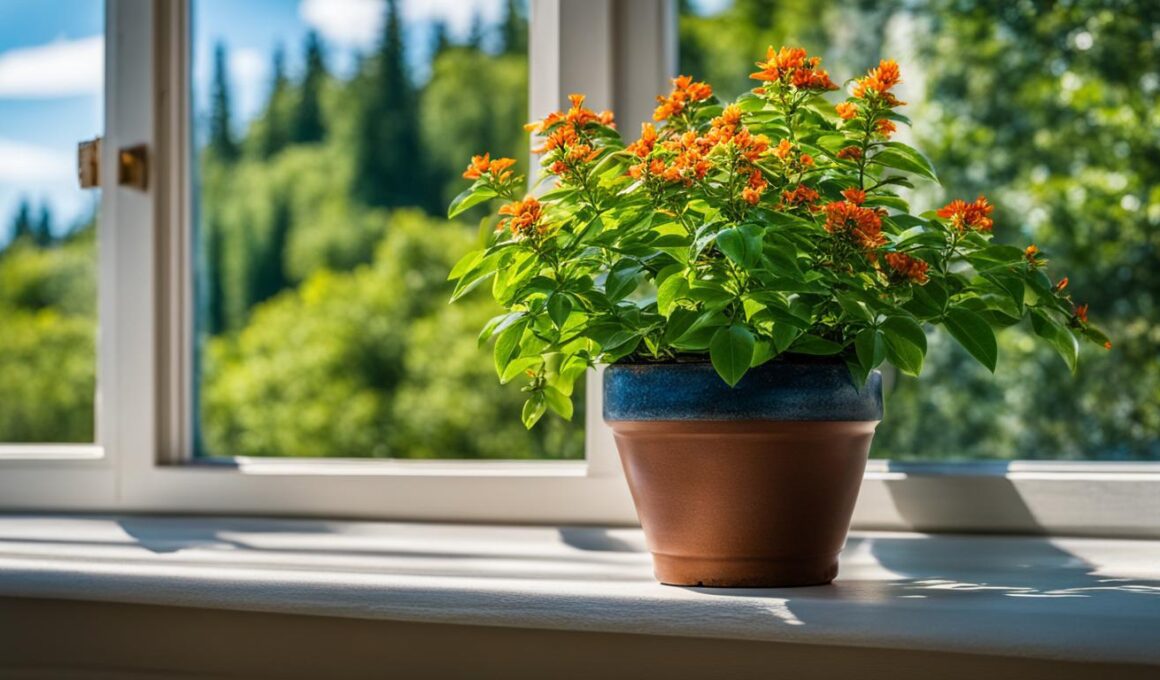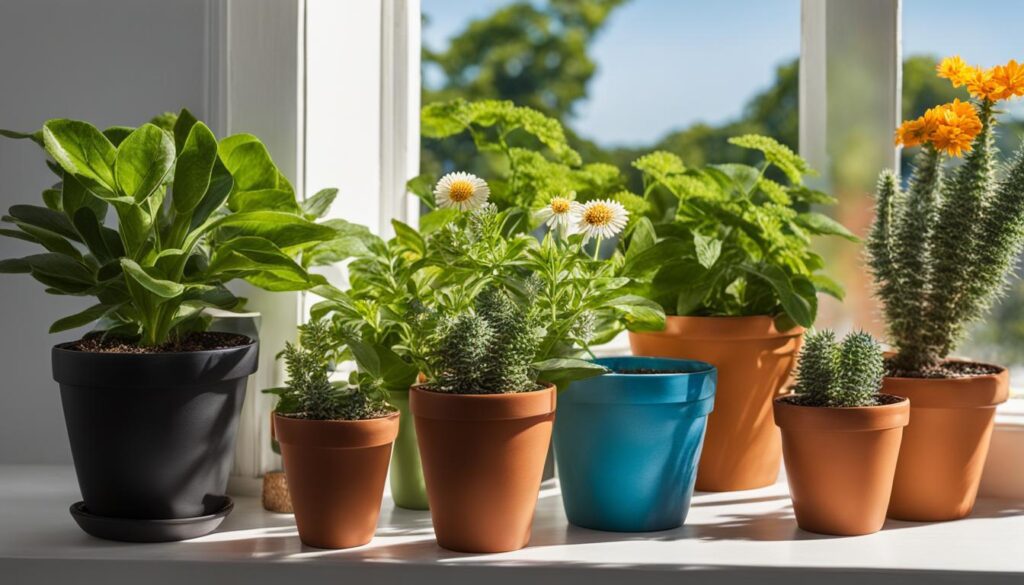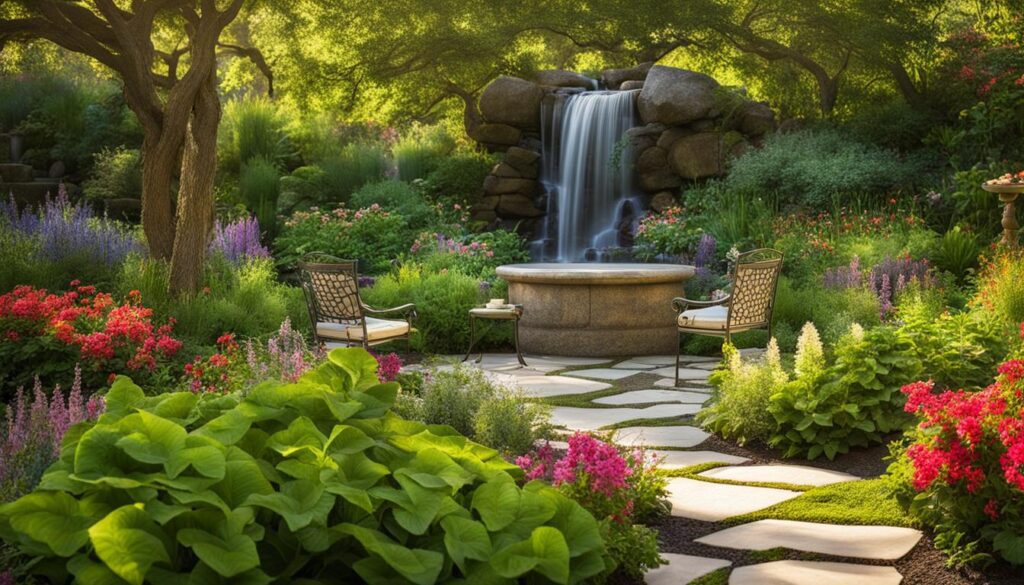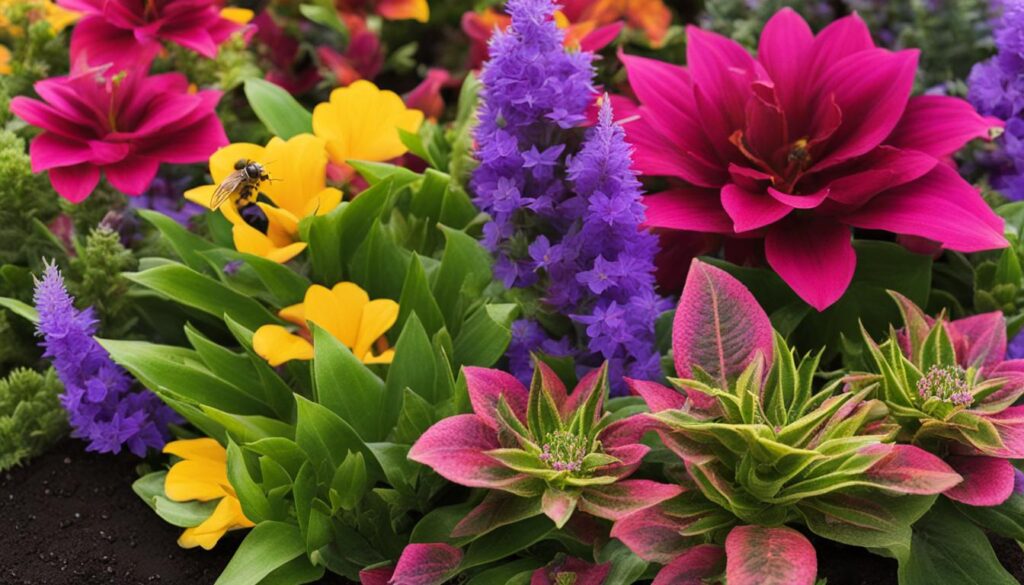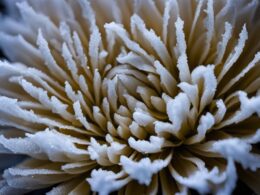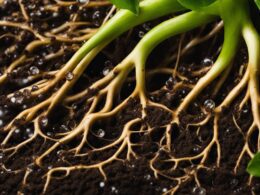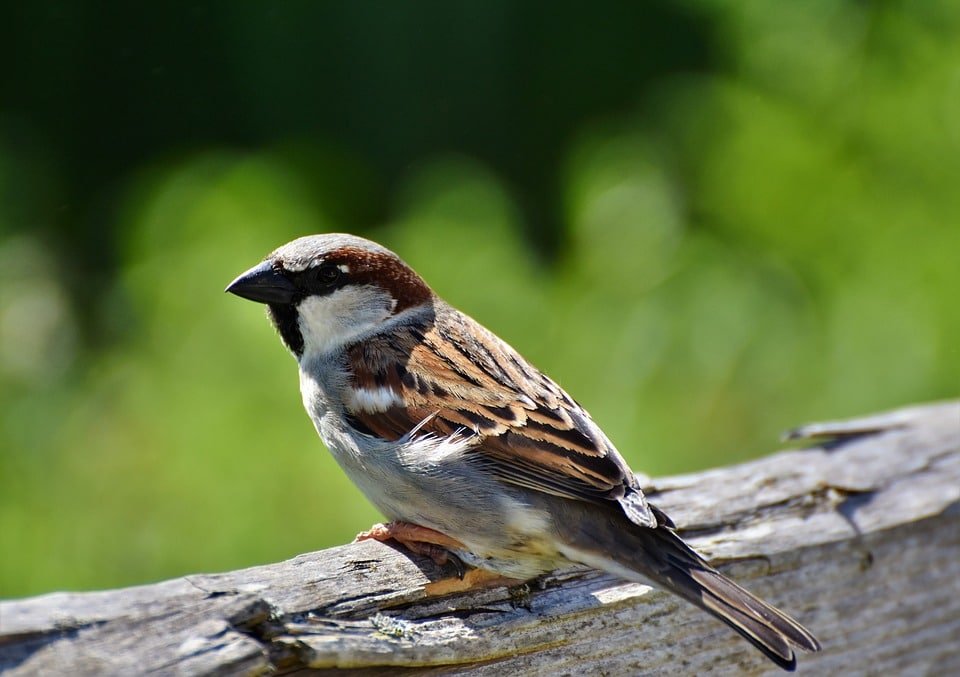Are you looking to add the beauty of potted plants to your outdoor space, but concerned about attracting bees? Worry not! We have compiled a comprehensive guide to help you choose potted plants that don’t attract these buzzing insects. Enjoy the vibrant colors and soothing greenery without the worry of bee encounters.
Discover a variety of bee-free plants that will suit your aesthetic preferences and thrive in your outdoor area. Whether you have allergies or simply value a serene garden oasis, these plants will provide the perfect solution. With the right care and strategic placement, you can create a beautiful, buzzing-free environment to relax and enjoy nature.
Key Takeaways:
- Choose potted plants that don’t attract bees to create a serene outdoor living space.
- Bee-free plants offer aesthetic benefits, enhancing the visual appeal of your garden.
- Provide proper care to ensure these plants thrive in your outdoor area.
- Strategically place the plants and incorporate other elements to design a bee-free oasis.
- Enjoy the beauty of nature without the worry of bee encounters by embracing a bee-free garden.
The Importance of Bee-Free Plants
While bees are essential for pollination and the overall health of ecosystems, some individuals may have allergies or simply prefer to have a serene outdoor living space free from bees. Bee-free plants provide an opportunity to enjoy beautiful potted plants without the worry of attracting bees.
By opting for bee-free plants, you can create a garden oasis that allows you to relax and enjoy the beauty of nature without the fear of bee encounters. These plants not only provide aesthetic benefits but also contribute to the overall tranquility of your outdoor space. Whether you have allergies or simply prefer a bee-free atmosphere, selecting plants that don’t attract bees ensures a peaceful and enjoyable outdoor environment.
Moreover, choosing potted plants that don’t attract bees doesn’t mean sacrificing the beauty and variety of your garden. There are numerous types of potted plants available that offer a range of colors, shapes, and sizes to suit any outdoor space. From vibrant roses to elegant orchids, you can find a diverse selection of bee-free plants to create a visually appealing garden.
Bee-Free Plants Provide a Serene Outdoor Living Space
“Having bee-free plants in my garden has allowed me to enjoy the outdoors without constantly worrying about bee encounters. It’s been a game-changer for me, as I can now relax in my outdoor space and appreciate the beauty of potted plants without any concerns.” – Jane, a satisfied gardener
| Benefits of Bee-Free Plants | Examples of Bee-Free Plants |
|---|---|
|
|
Whether you want to relax in your garden, host outdoor gatherings, or simply have a space where you can enjoy nature without the presence of bees, incorporating bee-free plants is the perfect solution. So go ahead and create your bee-free oasis with these beautiful potted plants.
Types of Potted Plants That Don’t Attract Bees
When it comes to creating a bee-free outdoor space, selecting the right types of potted plants is crucial. Fortunately, there is a wide range of plant varieties that don’t attract bees while still offering exceptional beauty and color.
Table: Bee-Free Potted Plant Varieties
| Plant Name | Scientific Name | Main Characteristics |
|---|---|---|
| Bells of Ireland | Moluccella laevis | Tall spikes of green bell-shaped flowers |
| Mediterranean Spurge | Euphorbia characias | Blue-green foliage with yellow flowers |
| Dianthus ‘Green Ball’ | Dianthus barbatus | Unique green ball-shaped flowers |
| Calla Lily | Zantedeschia spp. | Elegant trumpet-shaped flowers in various colors |
| Carnation | Dianthus caryophyllus | Frilly, fragrant flowers in a wide range of hues |
| Chrysanthemum | Chrysanthemum spp. | Abundant blooms in various shapes and colors |
| Cockscomb | Celosia cristata | Brightly colored, crested flower heads |
| Cymbidium Orchid | Cymbidium spp. | Large, showy orchid flowers in vibrant colors |
| Dahlia | Dahlia spp. | Diverse range of flower forms and colors |
| Flowering Tobacco | Nicotiana spp. | Tall spikes of fragrant, trumpet-shaped flowers |
| Gerbera Daisy | Gerbera spp. | Large, vibrant daisy-like flowers |
| Gladiolus | Gladiolus spp. | Tall spikes of showy, sword-shaped flowers |
| Hellebores | Helleborus spp. | Striking, long-lasting flowers in various colors |
| Hydrangea | Hydrangea spp. | Large, clustered flowers in beautiful pastel shades |
| Lady’s Mantle | Alchemilla mollis | Pale green leaves and yellow-green flowers |
| Ranunculus | Ranunculus spp. | Double-layered, rose-like flowers in vibrant colors |
| Rose | Rosa spp. | Fragrant, elegant flowers in various forms and hues |
| Tropical Lady’s Slipper Orchid | Paphiopedilum spp. | Exotic, slipper-shaped flowers in tropical colors |
| Tulip | Tulipa spp. | Classic, cup-shaped flowers in a plethora of shades |
| Zinnia | Zinnia spp. | Abundant, vibrant flowers in various forms and colors |
These plant varieties provide a range of options to suit different aesthetic preferences and outdoor conditions. From tall spires of Bells of Ireland to the delicate elegance of Calla Lilies, there’s something for every garden enthusiast.
By incorporating these bee-free plants into your potted garden, you can enjoy the beauty of nature without the worry of attracting bees. Whether you prefer vibrant blooms or unique foliage, these plants offer visual appeal and the opportunity to create a serene outdoor space.
Caring for Bee-Free Potted Plants
While potted plants that don’t attract bees may require less attention than plants that rely on pollinators, they still need proper care. By following a few simple guidelines, you can ensure that your bee-free potted plants thrive in your outdoor space.
Providing the Right Amount of Sunlight
Most potted plants prefer bright, indirect sunlight. Place your bee-free plants in a location where they receive at least 4-6 hours of sunlight each day. However, be careful not to expose them to direct sunlight for long periods, as it can lead to sunburn and damage the leaves.
Watering Appropriately
The watering needs of potted plants can vary depending on the type of plant and the climate in your area. It’s important to strike a balance between overwatering and underwatering. Monitor the soil moisture regularly and water your plants when the top inch of soil feels dry to the touch. Avoid allowing the soil to become waterlogged, as it can lead to root rot and other issues.
Fertilizing as Needed
While some bee-free potted plants may not require regular fertilization, others benefit from occasional feeding. Use a balanced, water-soluble fertilizer specifically formulated for potted plants. Follow the instructions on the package for the correct dosage and frequency of application. Overfertilization can be harmful to your plants, so it’s important to use fertilizers sparingly.
Pruning and Maintenance
Regular pruning helps promote healthy growth and maintain the shape of your potted plants. Remove any dead or yellowing leaves, spent flowers, or damaged stems. This not only improves the appearance of your plants but also prevents the spread of diseases and pests. Additionally, keep an eye out for any signs of pests or diseases and take appropriate action to mitigate any issues.
By providing adequate sunlight, watering properly, fertilizing as needed, and performing regular maintenance, you can keep your bee-free potted plants healthy and thriving. Remember to tailor your care routine to the specific needs of each plant and make adjustments as necessary. With a little attention and care, you can enjoy a beautiful outdoor space filled with vibrant and bee-free potted plants.
Creating a Bee-Free Garden Oasis
Transforming your outdoor space into a bee-free garden oasis is easier than you might think. By strategically incorporating potted plants that don’t attract bees and adding complementary elements, you can design a serene and inviting environment to relax and enjoy the beauty of nature.
Strategic Placement and Containers
When creating a bee-free garden oasis, consider the strategic placement of your potted plants. Position them in areas where bees are less likely to be attracted, such as away from flowering plants or fruit trees. Additionally, using containers for your potted plants allows you to easily move them around to optimize their placement for both aesthetic appeal and bee avoidance.
Enhancing with Water Features
To further enhance your garden oasis, incorporate water features such as small fountains or ponds. Not only do these elements create a soothing ambiance, but they also serve as a natural deterrent for bees. Bees often avoid water sources, preferring not to come into contact with them. The sound of flowing water can also help mask the sounds that attract bees, ensuring a peaceful environment.
Creating Seating Areas
In addition to potted plants and water features, consider creating cozy seating areas within your garden oasis. These spaces can be adorned with comfortable outdoor furniture, cushions, and blankets, providing a welcoming spot to unwind and enjoy the tranquility of your bee-free outdoor space. Surrounding these seating areas with potted plants that don’t attract bees further enhances the serene atmosphere.
| Potted Plant | Description |
|---|---|
| Bells of Ireland | Tall, green spikes with bell-shaped flowers |
| Mediterranean Spurge | Low-growing succulent with yellow flowers |
| Dianthus ‘Green Ball’ | Compact plant with spherical green flowers |
| Calla Lily | Elegant plant with trumpet-shaped flowers in various colors |
| Carnation | Fragrant flowers in a variety of colors |
By carefully selecting and arranging your potted plants, incorporating water features, and creating comfortable seating areas, you can design a bee-free garden oasis that provides a peaceful and beautiful outdoor space to enjoy. Embrace the beauty of potted plants and create your own sanctuary to relax and unwind.
Aesthetic Benefits of Bee-Free Plants
Incorporating bee-free plants into your outdoor space not only offers a sense of peace and tranquility but also provides aesthetic benefits that enhance the overall beauty of your garden. These plants come in a variety of vibrant colors, unique shapes, and lush greenery, creating a visually appealing and inviting environment.
When you choose potted plants that don’t attract bees, you have the opportunity to design a garden oasis that reflects your personal style and preferences. Whether you prefer a vibrant and colorful display of flowers or a more minimalist and green-focused aesthetic, there are bee-free plants to suit every taste.
“The vibrant colors and unique shapes of bee-free plants add a stunning visual element to any outdoor space.”
The vibrant colors and unique shapes of bee-free plants add a stunning visual element to any outdoor space. Imagine a garden filled with rows of tulips in various shades, or a patio adorned with hanging baskets of cascading gerbera daisies. These plants not only provide a feast for the eyes but also create a welcoming and inviting atmosphere for you and your guests.
Whether you’re looking to create a serene corner in your backyard or transform your entire outdoor space into a vibrant oasis, choosing bee-free plants allows you to curate a visually captivating environment. From the delicate petals of roses to the architectural beauty of cymbidium orchids, these plants bring a touch of elegance and sophistication to any garden or patio area. With careful selection and arrangement, you can create an outdoor paradise that is both bee-free and aesthetically pleasing.
Table: Examples of Bee-Free Plants and their Aesthetic Features
| Plant | Aesthetic Features |
|---|---|
| Roses | Various colors, delicate petals, romantic appeal |
| Tulips | Bright colors, elegant shapes, vibrant spring display |
| Cymbidium Orchids | Exotic blooms, architectural beauty, long-lasting flowers |
| Gerbera Daisies | Colorful petals, cheerful appearance, long-lasting blooms |
As you can see from the table above, bee-free plants offer a wide range of aesthetic features that can transform any outdoor space into a stunning showcase of nature’s beauty. From the classic elegance of roses to the bold and vibrant hues of gerbera daisies, these plants add a touch of charm and sophistication to your garden or patio.
By incorporating bee-free plants into your outdoor design, you can create a visually pleasing and bee-free sanctuary that allows you to fully enjoy the beauty of nature without any worries. So go ahead and embrace the aesthetic benefits of bee-free plants in your outdoor space today!
– Are the Potted Plants That Don’t Attract Bees Also Resistant to Bugs?
Potted plants that don’t attract bees may still be susceptible to bug infestations. It’s important to use natural plant bug killer solutions to keep your plants healthy without harming beneficial insects. Look for insect-repelling plants or organic pest control methods to prevent infestations in your potted garden.
Conclusion
By choosing potted plants that don’t attract bees, you can create a beautiful and serene outdoor living space. With a wide variety of options available, you can select plants that suit your aesthetic preferences and the specific conditions of your outdoor area. Whether you have allergies or simply prefer a bee-free environment, these plants allow you to enjoy the beauty of nature without the worry of bee encounters.
To ensure the health and vitality of your bee-free potted plants, it’s important to provide them with the proper care. This includes giving them the right amount of sunlight, watering them appropriately, and occasional fertilization if needed. Taking the time to understand the specific needs of each plant will help them thrive in your outdoor space.
Creating a bee-free garden oasis is within your reach. Strategically placing potted plants, using containers and raised beds, and incorporating other elements like water features or seating areas can transform your outdoor space into a tranquil haven. Embrace a bee-free garden today and start enjoying the beauty and serenity of potted plants in your own backyard.
FAQ
Are there potted plants that don’t attract bees?
Yes, there are many potted plant varieties that don’t attract bees. Some examples include Bells of Ireland, Mediterranean Spurge, Dianthus ‘Green Ball’, Calla Lily, Carnation, Chrysanthemum, Cockscomb, Cymbidium Orchid, Dahlia, Flowering Tobacco, Gerbera Daisy, Gladiolus, Hellebores, Hydrangea, Lady’s Mantle, Ranunculus, Rose, Tropical Lady’s Slipper Orchid, Tulip, and Zinnia.
Do bee-free potted plants require less care?
While potted plants that don’t attract bees may require less attention than plants that rely on pollinators, they still need proper care. It’s essential to provide them with the right amount of sunlight, water them appropriately, and occasionally fertilize if necessary.
How can I create a bee-free outdoor space with potted plants?
By strategically placing potted plants that don’t attract bees, using containers and raised beds, and adding other elements like water features or seating areas, you can design a bee-free space that allows you to relax and enjoy the beauty of nature without the worry of bee encounters.
What are the aesthetic benefits of bee-free plants?
Bee-free plants not only provide a sense of peace and tranquility but also offer aesthetic benefits. Whether it’s the vibrant colors of flowers, the unique shapes of leaves, or the overall greenery they bring to your space, potted plants can enhance the visual appeal of your outdoor area.





